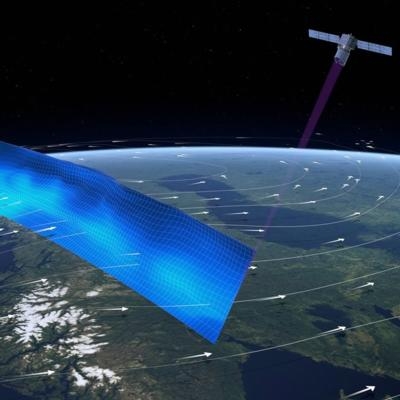Sun, Sep 08, 2019
Company Responds That Communications Error Led To Confusion
A potential collision between two satellites led to a bit of a dust-up between ESA and SpaceX recently, which the U.S. company says was the result of a "bug" in its on-call paging system.

Engadget reports that authorities identified a one in 1,000 chance of a collision between ESA's Aeolus Earth Observation Satellite and SpaceX's Starlink Satellite 44. Holger Krag, head of the Space Debris Office at ESA, told Forbes that when SpaceX was informed of the potential for collision, the company said it would not change the orbit of its spacecraft. ESA fired the thrusters of the Aeolus satellite about half an orbit before the potential collision, if it was going to happen, was anticipated.
While the Aeolus satellite was in position nine months before the SpaceX bird, there are no laws governing right-of-way in space, according to the report. Krag said ESA was not upset by SpaceX's refusal to move, but expressed concerns about how often such an event might happen in the future, given the number of satellites currently in orbit, and the number expected to be launched in the years ahead.
Earlier this week, SpaceX released a statement it hoped would clear up the confusion about its interactions with ESA over the incident.
"Our Starlink team last exchanged an email with the Aeolus operations team on August 28, when the probability of collision was only in the 2.2e-5 range (or 1 in 50k), well below the 1e-4 (or 1 in 10k) industry standard threshold and 75 times lower than the final estimate. At that point, both SpaceX and ESA determined a maneuver was not necessary," the statement said. "Then, the U.S. Air Force's updates showed the probability increased to 1.69e-3 (or more than 1 in 10k) but a bug in our on-call paging system prevented the Starlink operator from seeing the follow on correspondence on this probability increase – SpaceX is still investigating the issue and will implement corrective actions. However, had the Starlink operator seen the correspondence, we would have coordinated with ESA to determine best approach with their continuing with their maneuver or our performing a maneuver."
(Image from file)
More News
From 2023 (YouTube Version): Legacy of a Titan Robert (Bob) Anderson Hoover was a fighter pilot, test pilot, flight instructor, and air show superstar. More so, Bob Hoover was an i>[...]
Get The Latest in Aviation News NOW on Instagram Are you on Instagram yet? It's been around for a few years, quietly picking up traction mostly thanks to everybody's new obsession >[...]
Aero Linx: B-52H Stratofortress The B-52H Stratofortress is a long-range, heavy bomber that can perform a variety of missions. The bomber is capable of flying at high subsonic spee>[...]
Altimeter Setting The barometric pressure reading used to adjust a pressure altimeter for variations in existing atmospheric pressure or to the standard altimeter setting (29.92).>[...]
"Knowing that we play an active part in bettering people's lives is extremely rewarding. My team and I are very thankful for the opportunity to be here and to help in any way we ca>[...]
 Classic Aero-TV: Remembering Bob Hoover
Classic Aero-TV: Remembering Bob Hoover ANN FAQ: Follow Us On Instagram!
ANN FAQ: Follow Us On Instagram! ANN's Daily Aero-Linx (05.15.24)
ANN's Daily Aero-Linx (05.15.24) ANN's Daily Aero-Term (05.15.24):Altimeter Setting
ANN's Daily Aero-Term (05.15.24):Altimeter Setting Aero-News: Quote of the Day (05.16.24)
Aero-News: Quote of the Day (05.16.24)



